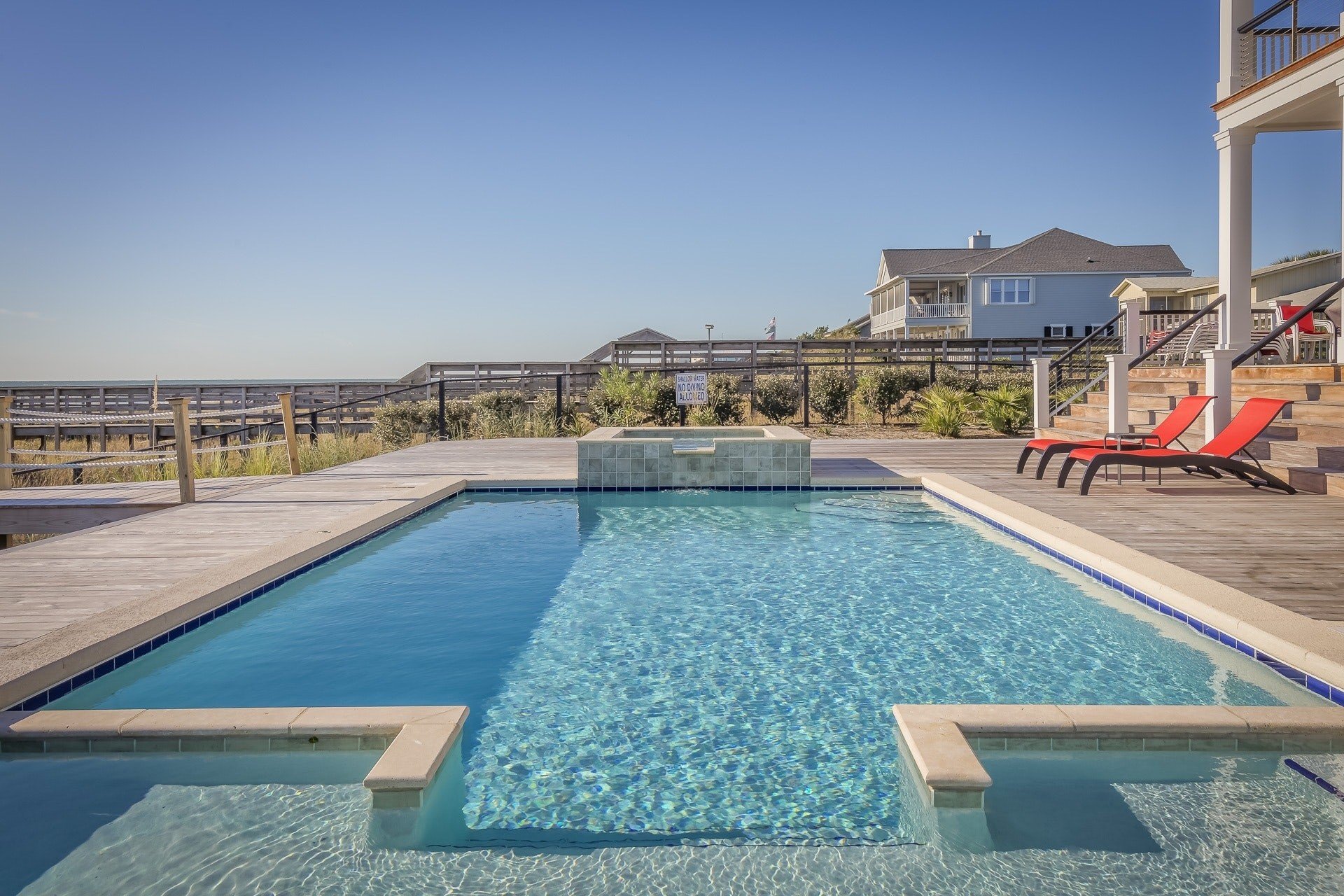
Common Pool Maintenance Mistakes
Making pool maintenance mistakes ranks on our personal scale of fun somewhere between tripping on a rake and getting kicked within the tender bits. Owning a swimming bath brings many chances to form pool care mistakes, big or small.
But mistakes are really just opportunities to find out. Educating yourself on the foremost common pool maintenance mistakes helps you retain your pool safer, cleaner, and running efficiently with less mess and frustration.
1. Adding Shock Directly Into The Pool Water
The chemical we call pool shock is essentially concentrated chlorine. At high strength, chlorine can bleach anything that enters your pool. for instance, it can turn black clothes pink and white clothes yellow if the concentration is just too high.
Don’t worry—you can’t overstock your pool. But beyond fashion gaffe, adding shock onto the pool water if you’ve got a vinyl liner is often a disaster. The shock granules will sink rock bottom and bleach your liner. The bleached area becomes brittle and frail, causing leaks.
Click here to get the pool contractor
The Solution
Pre-dissolve the chemical during a bucket of water before you shock your pool. this may allow the shock to disperse more evenly within the water, protecting your liner, pool walls, and floor.
An important rule to recollect when you’re avoiding pool maintenance mistakes is “Always add chemicals to water, and never water to chemicals.” Fill the bucket with water first before adding the shock to avoid potentially dangerous splashback.
Also, using warm water will dissolve the shock more easily, but it’ll also create the awesome-sounding but not-so-awesome-feeling chlorine steam. wear your protective eyewear, a chemical mask, and chemical-resistant gloves before you prep your bucket of shock water.
Use the entire contents of the bag when opened. If any granules settle to the rock bottom of the pool use brush to disperse. Add the recommended dosage of this product during evening hours while the filter pump is running.
Buy Now
If you click this link and make a sale, we earn a commission at no additional cost to you. 09/20/2020 09:48 pm
2. Not Brushing Your Pool
You already skills important it’s to vacuum your pool regularly to stay scum and gunk from build-up and ruining your swim.
But a bit like your teeth or a hutch of Angora rabbits, your pool needs an honest brushing to seem its best. Whether you vacuum your pool manually or automatically, follow up with an honest brushing.
The Solution
Grab yourself a pool brush and attack your pool’s hard-to-reach areas, including:
Behind ladders
Waterline
Steps and stairs
Corners and crevices
All this scrubbing keeps algae and other funky, gunky invaders cornered. Brush once every week, or more often if it needs it, for a healthy, pristine pool.
Strong and durable which will last for years. 20-inch extra-wide brushing which will cover large areas and finish cleaning quickly. Clean the foremost stubborn algae buildup quickly. The curved edges will help clean the hard corners very easily.
Buy Now
If you click this link and make a sale, we earn a commission at no additional cost to you. 09/21/2020 12:50 am
3. Using An Automatic Pool Cleaner once you Have An Algae Problem
Dealing with pool algae is tough enough. Add vacuuming to the list, and you would possibly end up thinking it’s time to exchange your pool with something less high-maintenance, sort of a rare orchid farm, or a meerkat sanctuary.
It’s tempting, but don’t stir up your robotic cleaner. Pressure-side automatic pool cleaners push algae and other debris up through a mesh bag. this provides the algae a pleasant little tour of your pool but doesn’t remove it.
Taking things high-tech won’t help, either. they are doing a tremendous job when algae are not a problem, but even the simplest robotic pool cleaners use a fine mesh bag that’ll clog with algae—fast. The clogged gunk gets blown around the pool, and you’re back to face one.
The Solution
Solving this quite common pool care mistake is straightforward, though a touch more labor-intensive. You’ll got to escape the manual vacuum. make certain to modify your filter to “waste” or remove the drain plug.
Yes, you’ll lose a good amount of water, but you’ll also lose the algae. They’ll be vacuumed right out of your pool and out of your life. Here’s our guide to the way to vacuum a pool manually.
Also, if you would like to avoid making any of those pool maintenance mistakes within the future, invest in our pool care video course. You’ll find out how to stay your pool consistently clean with proper skimming, vacuuming, and brushing techniques. And we’ll also show you ways to stay an easy, regular schedule so your pool will always be clean and clear.
Frustrated by adding chemicals and trying to stay your pool clear all the time?
We cut out all the confusion of pool maintenance during this easy-to-read illustrated ebook and video course. It’ll assist you to save $100 directly on pool care!
4. Ignoring Your pH and Alkalinity Levels
Waaaaaay back in your high school science classes, you almost certainly learned about the importance of balanced pH to healthy, happy ecosystems—including your pool. a coffee pH indicates acidity, while a high one indicates alkalinity. an excessive amount of either is bad news.
If your pool water features a very low pH, it’s very acidic. This might sound sort of a good thing at first; in any case , it’s very hard for algae and other invaders to thrive acidic water. Plus, acidic water sparkles and appears, initially glance, to be pristine and pure.
But as we once acknowledged after eating some really bad gasoline station sushi, appearances are often deceiving. Low pH can actually damage your pool equipment, including:
Pool pump and filter
Vinyl liner
Heater
Automatic pool cleaner
Chemical feeder
Maintenance equipment
Solar blanket
The Solution
Our motto? Better living through chemistry. Balancing acidity and alkalinity keeps your pH stable. Because almost anything can skew water chemistry in no time flat, confirm you test your pool water regularly.
Then adjust your levels with pH increaser, alkalinity increaser, and other essential chemicals until everything’s back in balance.
5. Backwashing Your Pool Filter Too Often
Despite its name, backwashing isn’t a secret toddler technique for leaving floaties in your soda. Backwashing cleans the media inside your filter, whether it’s sand or diatomite (D.E.). Pool water washes funk and gunk out of your filter media, then exits through your filters backwash valve drain port.
Backwashing is a crucial a part of basic pool care, but overdoing it’s one among the more common pool maintenance mistakes.
The Solution
Keep an eye fixed on the pressure gage on your filter tank. Right after you give your filter radical backwashing, a note of the pressure gage. In most cases, it’ll read between 10 and 15 pounds per sq in (psi), which is that the appropriate baseline for optimal filter performance.
Now, this might sound counterintuitive, but the more debris that’s caught by your filter, the higher your filter will function—up to some extent. Extra debris helps trap finer particles, but the advantages disappear once the buildup raises your pressure reading to around 10 psi over your baseline (i.e., 20 psi–25 psi).
When the pressure in your filter hits 10 psi over normal, you’ve probably got a pleasant dose of additional goop in there raising the pressure. Backwash that bad boy, and convey the pressure backtrack to stay your system humming along at peak efficiency.
6. Adding Pool Shock Through Your Skimmer
Some pool maintenance mistakes are relatively minor. But since making this one can literally magnify your pool’s filter system, we recommend avoiding it in the least costs.
Combining hypochlorite or dichlor pool shock and chlorine creates a deadly gas. If you’ve got an automatic chlorinator attached to your filter system and you pour the shock into the skimmer, the 2 chemicals will combine during a very small space.
Get more information about Naples fl Pool Company
The Solution
Keep your pool shock and your skimmer far, distant from each other. Always add your shock following the manufacturer’s directions, while wearing appropriate safety gear.
7. Shocking Your swimming bath During The Day
Chlorine in your pool water attaches itself to particles it wants to kill, leaving chemical compounds called chloramines. Since they irritate the eyes and skin and usually make life miserable, chloramines don’t belong in your pool.
Shocking gets obviate chloramines and help bring your pool’s chlorine levels to a well-balanced 3 parts per million (ppm).
But while daytime is great for enjoying your pool, it’s the incorrect time to shock. See, the shock is unstabilized chlorine. The sun, which isn’t kind to pool shock in the least, will burn off 1 ppm each hour, reducing the efficiency of your chemicals, and wasting your money.
The Solution
Shock in the dark to offer your pool shock the time it must do its job. Also, shock your pool once every week, using about 1 lb. (.5 kg) of a shock for every 10,000 gallons (37,854 L) of water, and test until you’re at or near the target of three ppm.


















